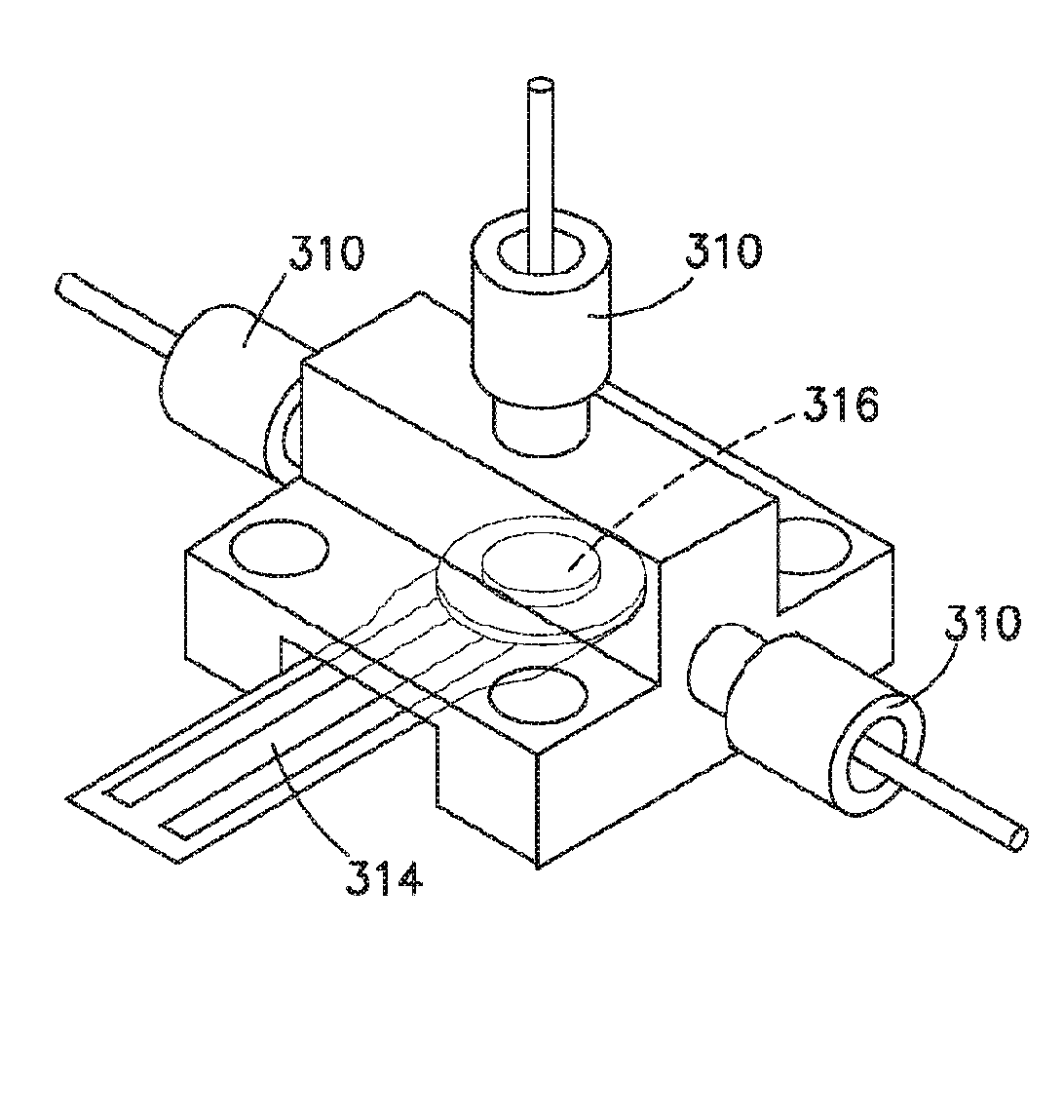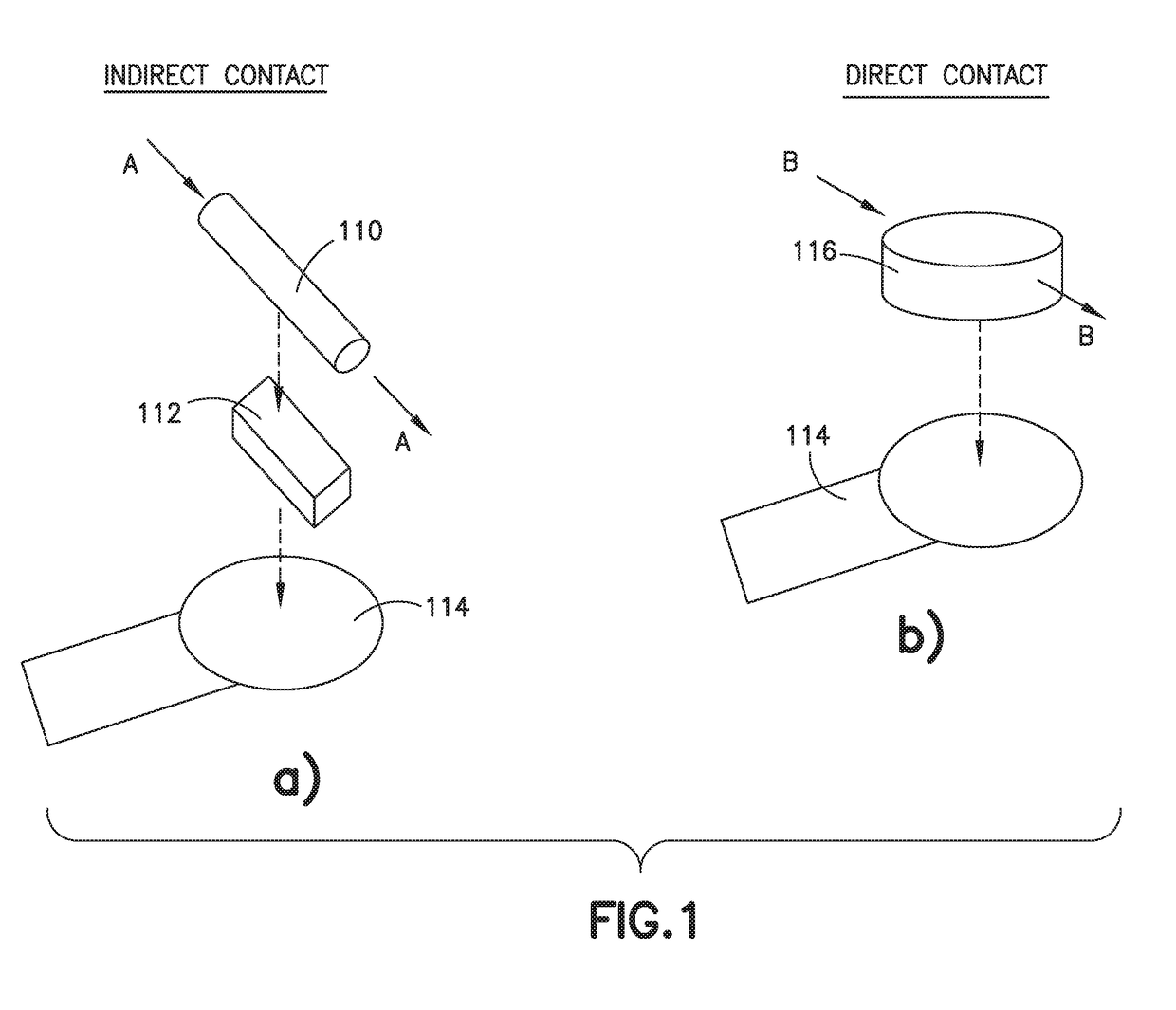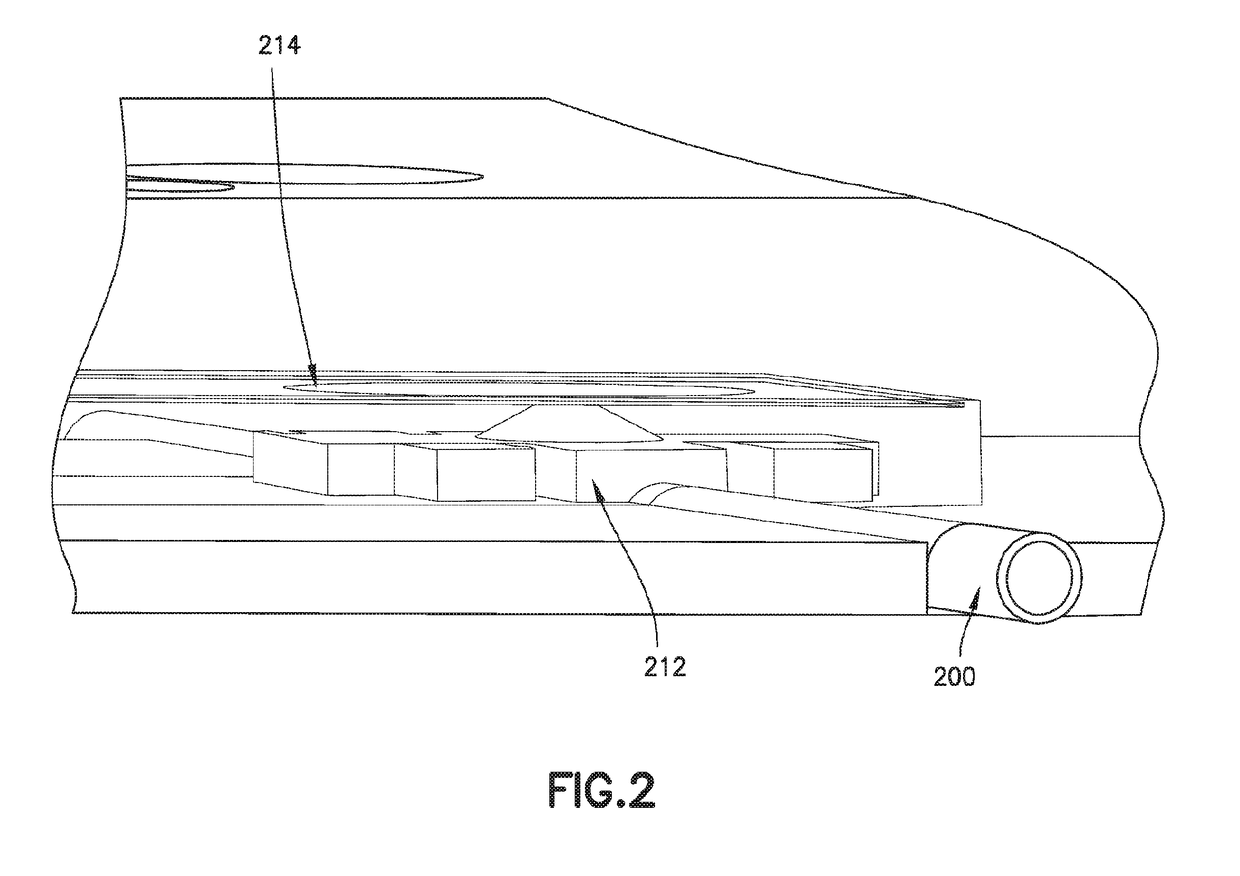Force sensing resistor for liquid low-volume detection and occlusion sensing and methods and apparatuses for flow sensing along fluid path in fluid delivery device
a technology of force sensing resistor and liquid low-volume detection, which is applied in the direction of liquid/fluent solid measurement, process and machine control, instruments, etc., can solve the problems of occlusion of fluid path, decay of induced pressure in infusion system, and impede fluid flow, etc., to achieve rapid detection of fluid low-volume levels
- Summary
- Abstract
- Description
- Claims
- Application Information
AI Technical Summary
Benefits of technology
Problems solved by technology
Method used
Image
Examples
second embodiment
or
[0080]In the context of an occlusion indicator for a pumping system, the force sensing resistor is used downstream of the pump module. Downstream means that the force sensing resistor is placed between a pump and a delivery end of the device as shown in FIG. 5.
[0081]As noted above, in the case of direct contact, the force sensing resistor is integrated in such a way that any pre-load of the force sensing resistor is minimized, so as not to affect its sensing dynamic range. In order to do so, the force sensing resistor is captured and held at a certain distance away from the force sensing resistor's critical sensing active area. Specifically, as shown in FIGS. 6, 7 and 8, a force sensing resistor 614, 714, 814 is captured by an annular wall 630, 730, 830 having a support wall width that is a certain gap distance away from the force sensing resistor's critical sensing active area. FIGS. 6, 7 and 8 are cross-sectional views of exemplary direct mode force sensing resistor operation in...
PUM
| Property | Measurement | Unit |
|---|---|---|
| diameter | aaaaa | aaaaa |
| sizes | aaaaa | aaaaa |
| pressure | aaaaa | aaaaa |
Abstract
Description
Claims
Application Information
 Login to View More
Login to View More - R&D
- Intellectual Property
- Life Sciences
- Materials
- Tech Scout
- Unparalleled Data Quality
- Higher Quality Content
- 60% Fewer Hallucinations
Browse by: Latest US Patents, China's latest patents, Technical Efficacy Thesaurus, Application Domain, Technology Topic, Popular Technical Reports.
© 2025 PatSnap. All rights reserved.Legal|Privacy policy|Modern Slavery Act Transparency Statement|Sitemap|About US| Contact US: help@patsnap.com



